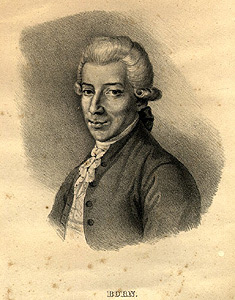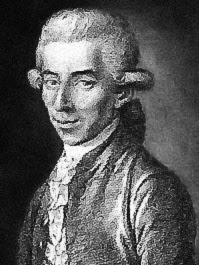 During a visit in Hamburg I tried to look for books of value for my interest in the Magia Posthuma. In fact, I only found two books, and I wasn't quite sure about one of them, Das grosse Handbuch der Dämonen compiled by Helmut Werner (tosa/Verlag Ueberreuter, Vienna). A few vampires encyclopedias have been published, but I must confess that I rarely use them, because they mainly focus on the fictional vampire. So I feared the worst when I unwrapped this hardcover book, but was delighted to find entries on early authors on vampires and vampire related topics like Phillip Rohr, Michael Ranft and Johann Christoph Harenberg.
During a visit in Hamburg I tried to look for books of value for my interest in the Magia Posthuma. In fact, I only found two books, and I wasn't quite sure about one of them, Das grosse Handbuch der Dämonen compiled by Helmut Werner (tosa/Verlag Ueberreuter, Vienna). A few vampires encyclopedias have been published, but I must confess that I rarely use them, because they mainly focus on the fictional vampire. So I feared the worst when I unwrapped this hardcover book, but was delighted to find entries on early authors on vampires and vampire related topics like Phillip Rohr, Michael Ranft and Johann Christoph Harenberg.In his foreword the author describes the book's themes:
"In über 1.200 Stichworten bietet dieses Nachslagewerk für den Laien und den Fachmann eine übersicthliche und umfassende Übersicht nach dem neuesten Forschungsbestand zu folgenden Themen: Monster (Luft, Land, Wasser), monströse Dämonen und Geister, Mischwesen, Fabeltiere, rätselhafte Tiere, Missgeburten (Mensch und Tier), rätselhafte Menschen und menschliche Ungeheuer wie die Blutgräfin Bathory, Kürten etc., Vampire, vampirartige Dämonen, Werwölfe, Biografien bedeutender Gelehrter, die sich mit dieser Thematik beschäftigten, und die zentralen Begriffe dieser Themen."
As for these creatures being demons or not, the first page of the Handbuch actually contains this entry:
"ADÄMONISTEN
Bez. für Anhänger einer Vampirtheorie, welche davon ausgeht, dass der Teufel, böse Dämonen, unkörperliche Substanzen wie Astralkörper (→Unverweslichkeit) und →Incubus nicht zur Erklärung des →Vampirismus herangezogen werden dürfen. Im Gegensatz zu ihren Gegnern, den Dämoniaken, glauben sie zwar an die Existenz des Teufels, sie lehnen aber seine Leiblichkeit ab. Der Teufel untersteht Gott und seine Fähigkeit, mit Erlaubnis Gottes in die Schöpfung einzugreifen, ist nur begrenzt."
So, obviously, it is debatable whether this is really an encyclopedia of demons or not, and it is probably a matter of taste whether you like the mix of themes. Personally, I would have preferred it done differently, e.g. making it easier to find the sources behind each entry, but I still find the encyclopedia both useful and enjoyable. Certainly, this book made the trip from Germany to Denmark by train feel shorter.

Unfortunately, errors can be found, and I can't help wondering why there is no entry about Peter Plogojowitz, when there is one about Arnont Paole?! I certainly don't understand how Werner has come to rename Karl Ferdinand von Schertz "Karl-Friedrich Schertz"?!
So some caution is required when using Hemut Werner's Handbuch, but I am sure that this book will be enjoyed by others interested in Magia Posthuma, and it will probably also attract some new attention to the old vampire cases and the 18th century vampire debate. The bibliography is also worth studying, so at the price of €9.95, there is no need to hesitate in ordering this 316 page Handbuch.















